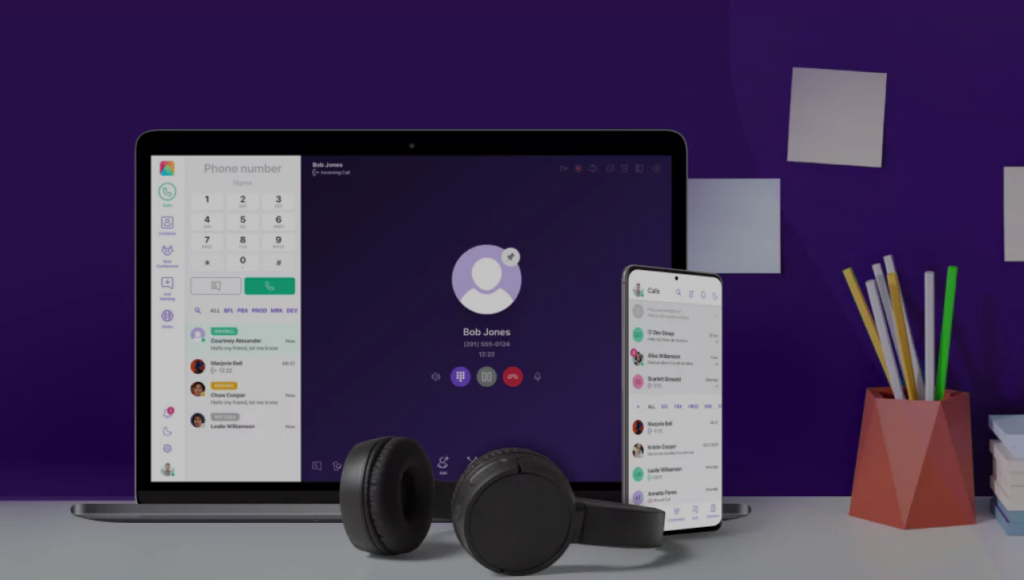If you work in IT or any technical position, you owe it to yourself to become acquainted with these “as a Service” monikers, whether it’s SaaS, PaaS, or IaaS.
APaaS vs. PaaS: What’s the difference?
PaaS and PaaS are often used interchangeably, but they are different. Platform-as-a-Service solutions are more generalized, while APaaS solutions are specifically focused on applications, such as softphones or desktop communication apps.
PaaS is any integrated stack, solution, or service delivered over the Internet that can provide a database, middleware, operating system, or even an application.
APaaS can be considered a subcategory of PaaS that specifies the service is custom-made for applications rather than a diverse variety of possible platforms.
“App development in both small and large businesses can be complicated, expensive, and time-consuming. APaaS addresses these pain points through superior scalability, low-code solutions, and cloud-based delivery.”
What Are 6 Benefits of APaaS?
Why has APaaS proven to be such a prevalent trend in enterprise workflows? The benefits of this type of platform are clear.
1. Low-code solutions:
It’s time to bring the technical skill of programming down to earth. Under APaaS, even those without programming experience (known often as “citizen developers”) can still create excellent programs.
Building an application from the ground up generally requires a team of developers, and some of those developers will need special skills to build the app’s backend. APaaS offerings remove the need for backend developers, provided the existing team has the skills required to use the APaaS-provided infrastructure.
2. Shorter development times:
Even seasoned programmers can benefit from APaaS since it helps minimize repetitive tasks and makes room for more creative development. Templates are often available so that the underlying infrastructure of a new app is already ready to go. There’s no need to waste time starting from scratch this way.
And fewer developers required
Additionally, the low-code tools provided by many APaaS solutions further decrease the need for a large team of developers. Fewer developers mean less money spent on new hires or contractors, which can significantly improve the app’s profitability.
3. Scalability:
APaaS solutions are cloud-based and designed for scalability. The promise of cloud computing, in general, is that companies will have access to the resources they need whenever they need them.
Your app must be able to grow, whether you’re developing an in-house application or one meant for external customers or clients.
As your app gains momentum, your app’s infrastructure needs to grow with it. Otherwise, users may experience slow loading speeds, or the app may fail to operate entirely.
The pressure to create powerful software under a certain budget is always looming overhead, so why not scale your resources depending on the project’s circumstances?
APaaS embraces this promise and applies it specifically to the backend infrastructure of applications.
4. Speed:
Speed is an essential factor in application development. It’s common that the first app to introduce a new capability is seen as innovative and appreciates an influx of users. Additionally, rapidly deploying bug fixes can reduce user frustration and bad reviews.
Your APaaS solution will give you a core software layer, backend infrastructure, and often custom development tools. Each feature significantly decreases development time by removing the need to build a software layer and infrastructure from the beginning.
The exact capabilities of an APaaS offering will vary between companies. For example, some APaaS solutions provide low-code development tools that use pre-made modules that quicken the development process and cut down on the mundane aspects of app development.
Faster time-to-live
Not having to write the entire app from scratch accelerates the deployment time of new business applications, allowing the developers to focus on more important aspects of the job.
5. Cloud-based offerings:
APaaS often refers to services hosted in the cloud. Having to create new apps on the premises can be a costly endeavor. Instead, you can opt for a subscription service at a regular rate, which simplifies budgeting and gives you more accurate cost estimates.
6. Enabling mobile apps:
Creating mobile applications is becoming more commonplace as smartphones and the Internet of Things trend continue to rise. Adapting apps to a variety of different devices is much easier through APaaS.
In Summary
Application Platform as a Service overall makes your company more agile, in turn raising productivity and revenue rates in today’s competitive corporate environment.
APaaS: Going Beyond Cloud Computing
The rapid adoption of cloud computing has given birth to several ‘as-a-service’ platforms.
Every category under the ‘as-a-service’ umbrella helps companies solve a specific problem or gain access to advanced capabilities that would otherwise be out of reach or built in-house.



![What is a CPaaS? In-Depth 101 Guide [10 Major Benefits]](https://acrobits.net/wp-content/uploads/Acrobits-Is-Joining-Intelliquent-Family-1024x580.png)



